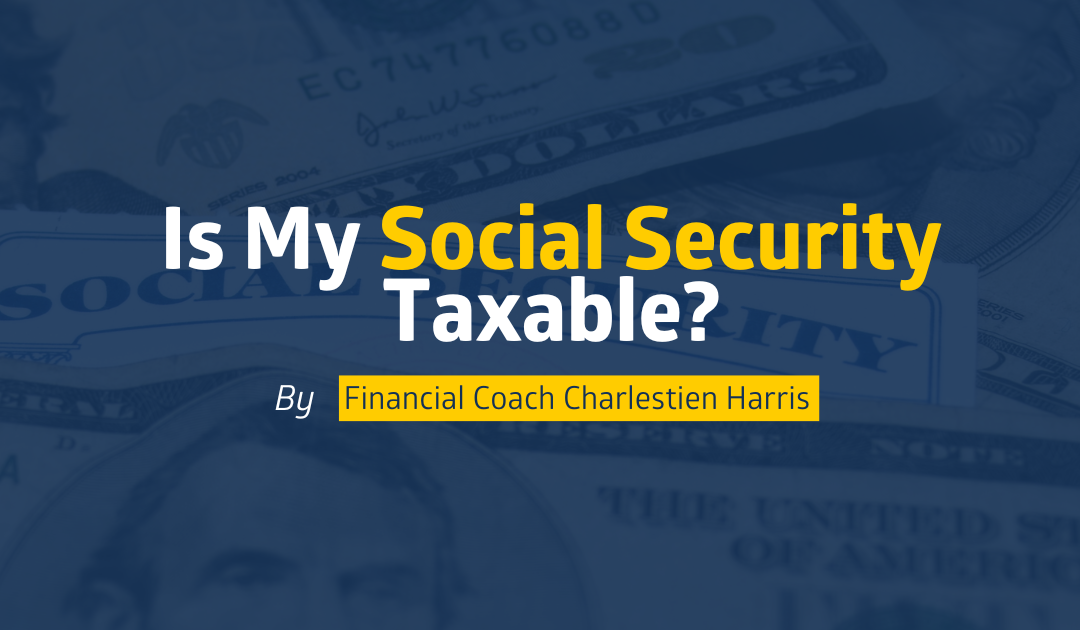By: Charlestien Harris
During tax season is when I get the most questions about what income is taxable or nontaxable. One of the biggest concerns I get from my audience is: Why is my Social Security income taxable?
The common myth about Social Security income is that it is not taxable. According to the Internal Revenue Service (IRS), the amount you pay is determined by a calculation that involves what the IRS calls “combined income.” If you receive Social Security benefits from the government, then that money is subject to taxes. The amount of tax you may have to pay will depend on your income and your filing status. Combined income, as defined by the IRS, is your adjusted gross income plus your nontaxable interest plus half of your Social Security benefits. Tax-exempt interest, or nontaxable interest, is interest income that is earned on a bond issued by states, cities, or counties and the District of Columbia that is not subject to tax.
Here are the rules according to the Social Security Administration on how taxes are figured concerning your Social Security benefits:
Up to 85% of your Social Security benefits are taxable if:
- You file a federal tax return as an “individual” and your combined income is more than $34,000.
- You file a joint return, and you and your spouse have a combined income of more than $44,000.
Up to 50% of your Social Security benefits are taxable if:
- You file a federal tax return as an “individual” and your combined income is between $25,000 and $34,000.
- You file a joint return, and you and your spouse have a combined income between $32,000 and $44,000.
As a VITA tax preparer, I get tax clients that bring me Social Security monthly statements instead of the official SSA-1099 that each recipient of benefits receive in the mail. While this is beneficial to the recipient, it may not be for the tax preparer. Your benefits may decrease or increase within a year, and that monthly statement will reflect those changes, and also serves as a record for the recipient. The end-of-year official SSA-1099 documents the total amount of benefits you received for the entire year, and has pink boxes to distinguish it from the monthly statement which is printed in black and white. If you are a recipient of Social Security benefits, your SSA-1099 should be mailed to you automatically. If you did not receive it, then a printable version is available online if you have created a “my Social Security” account online.
To create a my Social Security account, you must: be at least 18 years of age, have a Social Security number, have a valid U.S. mailing address, and have an email address. Once you have established that you have this information on hand, here are the steps to creating the account.
- Step 1 – Visit www.ssa.gov/myaccount, then select the “Create an Account” button.
- Step 2 – Create a credential with one of the two credential partners, Login.gov or ID.me. If you have a Login.gov or ID.me account, you can select the appropriate button to access your personal my Social Security account.
- Step 3 – If you don’t have a Login.gov or ID.me account, select the “Create an Account” link to create a Login.gov credential to access your personal my Social Security account.
- Step 4 – If you create a new Login.gov credential, you will still need to provide some personal information to verify your identity. You will also receive an activation code to complete the process. (TIP: I actually performed this step with a neighbor, and it can be a little intimidating for a senior that is not tech-savvy. So you might want to solicit the help of a person that can easily navigate the site.)
- Step 5 – Read and agree to the “my Social Security” Terms of Service prior to accessing your account. Now you are ready to log in!
- Step 6 – Once you have successfully created your account, choose email or text under Message Center Preferences to receive courtesy notifications and messages. I like that feature, because it alerts me when my statement is ready and it keeps me abreast of any changes or news that is of importance to me regarding my benefits.
If your entire income is from monthly Social Security benefits, you might not need to file a federal tax return if you fall under a certain financial threshold. But even when that’s the case, there could be times when you’re better off filing a return. As a general rule, if Social Security benefits were your only income, your benefits are not taxable and you probably don’t need to file a federal income tax return, according to the Social Security Administration. But if you received Social Security benefits plus other income, your tax obligation depends on how much you earned.
For more information on this and other financial topics, visit www.banksouthern.com/blog, email me at Charlestien.Harris@testbanksouthern.aceone.io, or call me at 662-624-5776.
Until next week – stay financially fit!

